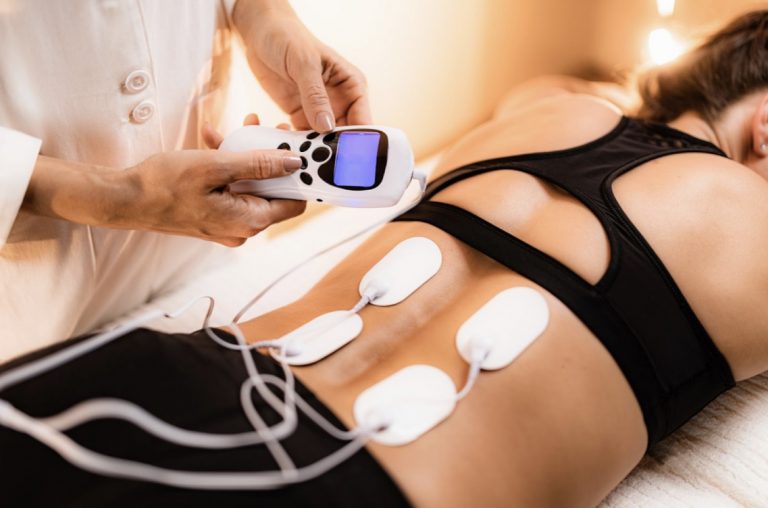A back stimulator (also known as a spinal cord stimulator) is a device that sends gentle electrical pulses directly into the spinal cord. It’s a form of therapy that helps people manage chronic back pain and other conditions. It’s proven effective for helping people who have not found sufficient relief from conservative treatments like medication or injections. Spinal stimulation is also a recommended treatment option for people who have undergone back surgery and are not candidates for another procedure or would like to avoid a second surgery.
To help you learn more about what a back stimulator is and whether it could potentially help you, our team has created the following informative guide. Keep reading to learn more!
How Does a Back Stimulator Work?
Back stimulator is a simpler and more informal term for spinal cord stimulator. The device consists of a power pack (or generator) that sends electrical pulses through two thin wires that are attached to electrodes (or leads) under the skin near the spinal cord.
Several different types of back stimulators exist that vary in size or power delivery method. For example, some devices have a rechargeable battery, meaning they do not need to be replaced as often as traditional stimulators. Your doctor can help you explore the options that are right for you.
How Does a Back Stimulator Relieve Chronic Pain?
Although research into back stimulators is ongoing, the current evidence supports the idea that back stimulators relieve chronic back pain by disrupting the pain signals that are sent to the brain. Instead of a pain sensation, people with back stimulators experience a barely perceptible tingling sensation.
Spinal cord stimulation can be especially effective in improving your quality of life when combined with physical therapy and lifestyle changes that support your overall health and wellness. These lifestyle changes include getting regular exercise, improving your posture, and eating a healthy, balanced diet.
What Conditions Can a Back Stimulator Help Treat?
Spinal cord stimulators can help people living with a wide range of conditions. In addition to spine conditions that cause chronic back pain, doctors may recommend a back stimulator to help with the following conditions:
- Arachnoiditis
- Angina
- Diabetic neuropathy and other neuropathies
- Complex regional pain syndrome
- Post-amputation pain
- Failed back surgery syndrome
- Abdominal pains
Usually, people considering a back stimulator have attempted conservative treatments for their condition for a period of weeks or months without finding adequate relief.
Do I Need Surgery for a Back Stimulator?
A spinal cord stimulator requires a minimally invasive procedure to implant the generator in the low back, tunnel the wires, and attach the electrodes to the epidural space surrounding the spinal cord. This procedure can be performed on an outpatient basis at an ambulatory surgery center and has a fast recovery period.
Before the device is permanently implanted, you’ll need to undergo a trial period that also requires a minor, minimally invasive procedure. Your surgeon will use a very thin needle to attach the electrodes near the spinal cord and run the wires to a temporary external generator. The trial period allows you and your doctor to determine if spinal cord stimulation will effectively provide pain relief before the device is permanently implanted. The trial period lasts for approximately one week, and if it’s successful, you can schedule surgery for permanent placement.
What Do I Need to Know About Maintaining the Implanted Device?
After your implantation procedure, you’ll receive care and operating instructions. You’ll be instructed to avoid operating your device while driving or using heavy machinery. Additionally, your doctor will recommend training a family member or spouse on how to turn off the device if you’re unable to reach it for any reason.
How Much Does a Back Stimulator Cost?
Costs for back stimulator devices and procedures vary depending on several factors. These factors include the type of device, the complexity of the procedure, the facility, the surgeon, and your insurance provider. For patients with Medicare, spinal cord stimulator procedures are covered if the treatment is determined to be medically necessary. At BEST Health System, we accept Medicare and most private insurance providers. We recommend reaching out to our care team to learn more about the costs of a back stimulator. We’re always happy to help!
Are You Interested in Spinal Cord Stimulation?
If you’re living with chronic pain that hasn’t responded to prior treatment, reach out to BEST Health System to find out if you’re a good candidate for spinal cord stimulation. Please call us today to speak with a dedicated patient coordinator.
